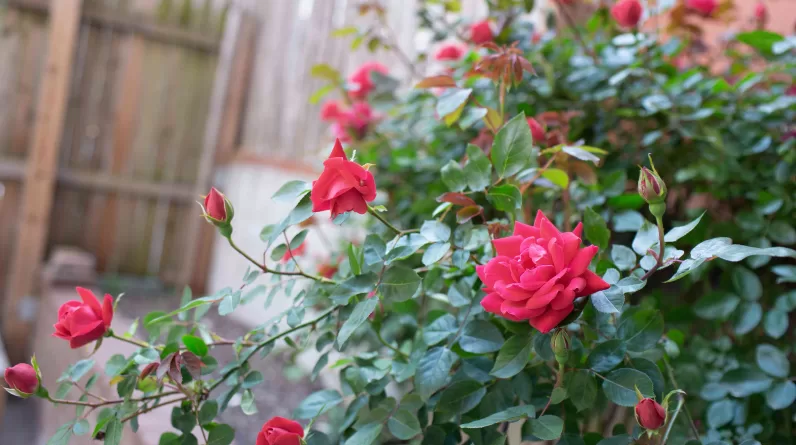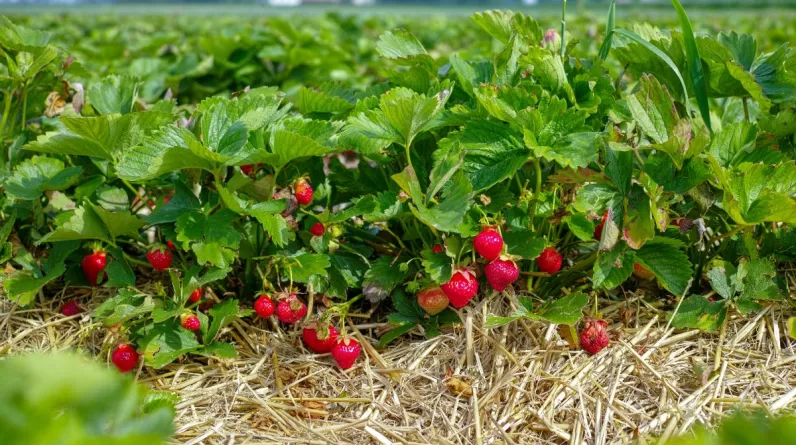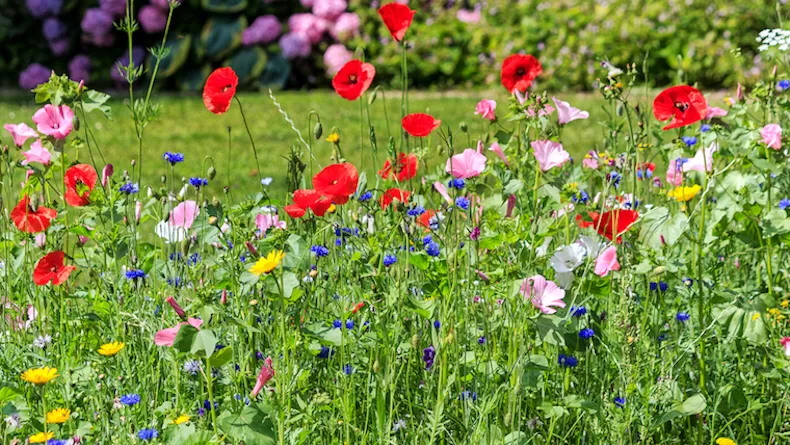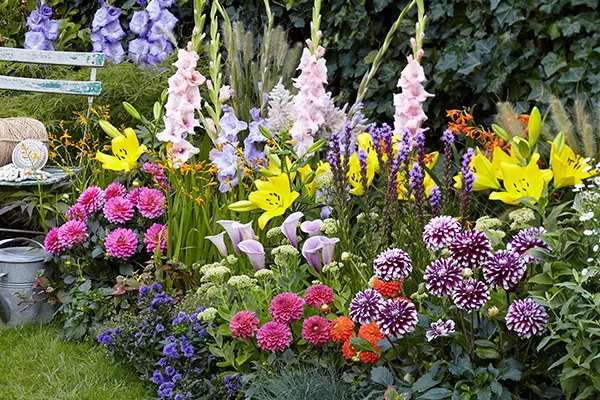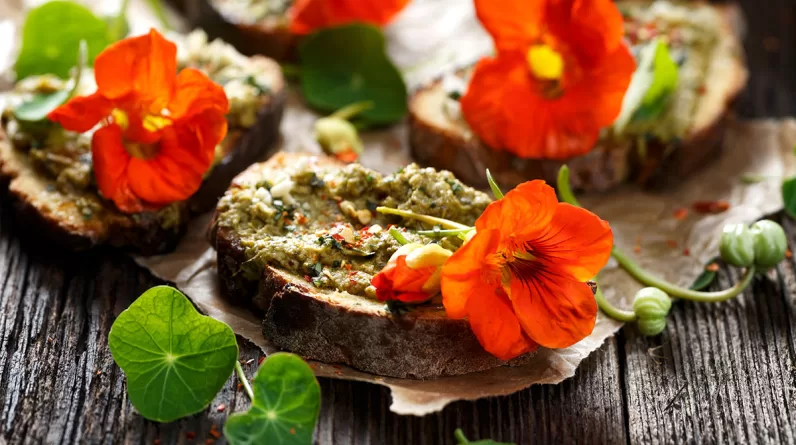You’ve spent hours building your raised garden beds, and now they’re ready to be filled. But before you start digging into the dirt, why not add a creative touch to your beds?
A fresh coat of paint is an excellent way to spruce up your space and make a statement. Even though some gardeners prefer a natural wood stain, adding colors to your raised beds can be a game changer to your landscape.
In this article, we’ll tell you everything you need to know about raised garden bed paint. We’ll cover everything from choosing the paint type to protecting your plants during painting.
Why Paint Raised Garden Beds?
Painting your raised garden beds is a great way to enhance their appearance and protect the wood. Let’s look at the pros and cons of painting raised garden beds.
Pros
1. Aesthetic Appeal
Painting allows you to customize the appearance of your garden beds and add a touch of color to your outdoor space.
For example, you can paint it to match your house or the surrounding area, or maybe you have a community garden and want to teach children to build garden beds.
No matter why you want to paint your garden beds, painting makes your garden more visually appealing and creates a pleasant environment.
2. Wood Protection

Painting your garden beds provides a barrier for your wood against moisture, UV rays, and other environmental factors that lead to wood problems.
The degree of protection varies depending on the type of paint, the number of coats, and the covered wood sides. As such, paint extends the life of your raised garden beds and saves you maintenance fees in the long run.
3. Easier Maintenance
Another pro of painting your garden beds is that the painted surface is generally easier to clean and maintain than unfinished wood. This makes it easier to keep your garden beds clean and tidy.
Cons
1. Risk of Chemical Leaching
The biggest concern regarding painting garden beds is that some paint and stains contain chemicals that can leach into the soil.
These chemicals can potentially harm your plants or contaminate your vegetables. If you’re planting flowers, this shouldn’t be a huge problem. After all, choosing a paint or stain that’s safe for plants is crucial.
2. Additional Cost
Painting garden beds might not be suitable for gardeners tight on budget. That’s because brushes, paint, and other tools might add a lot to the overall cost of the gardening project.
What Is the Best Paint for Raised Garden Beds?
Choosing the right paint for your garden beds is crucial to ensure your plants’ safety and the longevity of the garden bed.
You should always look for water-based paint that’s suitable for exterior use and labeled nontoxic. These paints are usually safe for plants and environmentally friendly.
1. Latex Paint
Exterior latex paint will do a good job of protecting your soil and plants against harmful chemicals. Make sure to only paint the exterior of your garden beds. If you want to paint the interior, you should line your bed to keep the soil safe.
Even though latex paint involves volatile organic compounds, several brands are free from VOC. VOC-free latex paint allows you to safely paint the interior and exterior of your garden beds for more longevity.

2. Milk Paint
Milk paint has become one of the most popular paints in gardening. That’s because it’s eco-friendly, nontoxic, and safe for plants and vegetables.
It’s an all-natural paint made from milk protein, lime, and organic pigment. Milk paint is also biodegradable, VOC-free, and safe for edible vegetables.
Moreover, milk paint leaves a beautiful matte finish, giving the garden beds a rustic look. You might see watermarks on the wood after painting, but milk paint does a great job of resisting peeling, fading, and chipping.
If you want an extra layer of protection, apply a layer of hemp or linseed oil.
3. Mineral Oil
Mineral oil is a safe, nontoxic oil derived from petroleum compounds. It’s often used to paint wooden kitchen surfaces and utensils but is also ideal for garden beds.
Mineral oil doesn’t only improve the appearance of the painted surface; it also acts as a sealant. That means it fills the pores and dents in wooden surfaces, protecting the wood from moisture and preventing rot and decay.
Thanks to its water-repelling properties, mineral oil can improve the longevity of your garden beds.
How?
When watering the plants, moisture often seeps into pieces of wood and ruins them. However, moisture won’t seep into pores and dents if you use mineral oil.
The main downside of mineral oil is that it doesn’t add any color or tint to the wood. On the other hand, milk paint has over 56 different colors.
Which Color Is Best for Painting Raised Garden Beds?
When painting raised garden beds, the right color is a matter of personal preference. You can pick whatever you like as long as you ensure the paint color is safe for your plants.
Neutral colors such as grey, white, tans, and browns are popular choices as they blend in well with the plants and preserve the natural look of wood.
On the other hand, brighter colors such as blue, green, or red add a pop of color to your garden. This makes your garden beds a focal point and adds visual interest to your landscape.
It’s also worth noting that darker colors like brown tend to absorb more sunlight, increasing the soil’s temperature.
This might be beneficial in spring when you want your soil to retain more heat. However, it can be problematic in summer due to the high temperatures.
Lining Your Raised Bed Before Painting
As previously mentioned, most paints contain chemicals that are harmful to soil and plants. That’s why it’s crucial to line your raised bed before painting to ensure your plants are safe from chemicals.
A raised bed liner is a protective layer or barrier placed between the soil and the sides of a raised garden bed. It’s usually made of plastic. Liners protect the wood from direct contact with the soil, reducing the risk of soil contamination.
Wash the Wood Before Painting
Before you start painting your garden beds, it’s crucial to wash the wood and remove any dirt or debris.
Use your garden hose and wash the wood thoroughly. Then, let it dry completely before painting.
If there are still dust particles after washing, use a wire brush to wipe them off. The goal is to have the cleanest possible surface for the paint to stick to.
Empty Your Raised Garden Beds
You can skip this step if your raised garden beds are yet to be filled with soil. If not, you must ensure your raised beds are empty before painting.
That’s because you don’t want any of your plants to come in contact with paint during the painting process.
You can remove or transfer your plants to another bed. If that’s not possible, you should only paint the exterior of your garden beds and avoid painting the interior.
Use a Brush or a Roller, Not a Sprayer
While sprayers might be more efficient in covering larger areas, they’re inaccurate and might lead to paint dropping over your plants.
That said, using a paintbrush is better because it provides more control, ensuring a safe painting job.
Add a Protective Coat
After painting your garden beds, you can go a step further by applying a protective coat. An extra protective layer will provide extra protection for the wood against natural elements and increase the longevity of your raised beds.
Depending on the type of paint you’re using, there are several coats to choose from. You can opt for something natural like beeswax or go for an acrylic coat.
Don’t forget to check the ingredients of the coating material before applying to ensure it doesn’t contain any harmful chemicals.
FAQs
Can I paint a wooden raised garden bed?
If your garden bed is yet to be assembled, you can paint all the sides before you put them together.
In case your garden bed is already structured, you can paint it up to the soil line or remove the soil and paint the interior too.
Do I have to put a liner under my raised garden bed?
In most cases, lining the bottom of your raised garden bed is crucial. That’s because lining provides protection against weeds and pests.
Moreover, it provides more durability to the beds and insulates the soil, which helps the soil maintain a consistent temperature.
Wrapping Up
Painting your raised garden bed won’t only enhance the visuals of your landscape, but it will also provide extra protection for wood against environmental factors.
Before you start, it’s crucial to choose a suitable raised garden bed paint to ensure your plants are safe from any harmful chemicals. After that, line your raised bed to provide extra protection while painting.
Finally, don’t forget to add an extra protective coat, such as beeswax or acrylic, to provide maximum protection for your beds.

